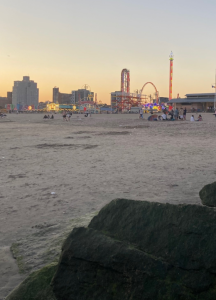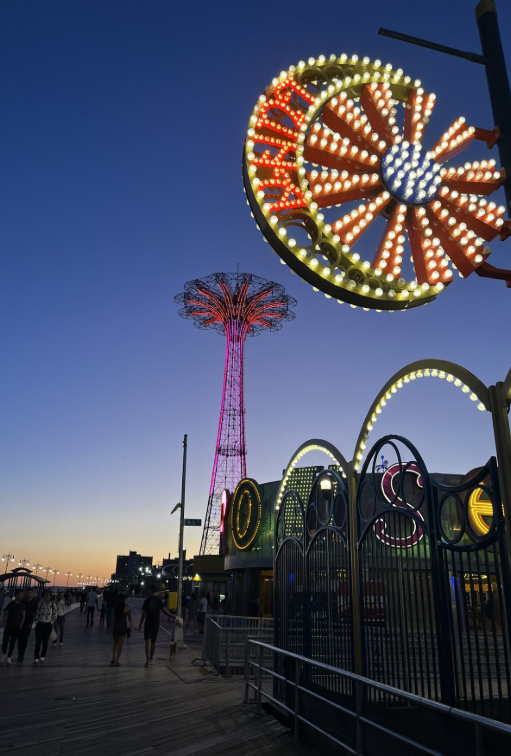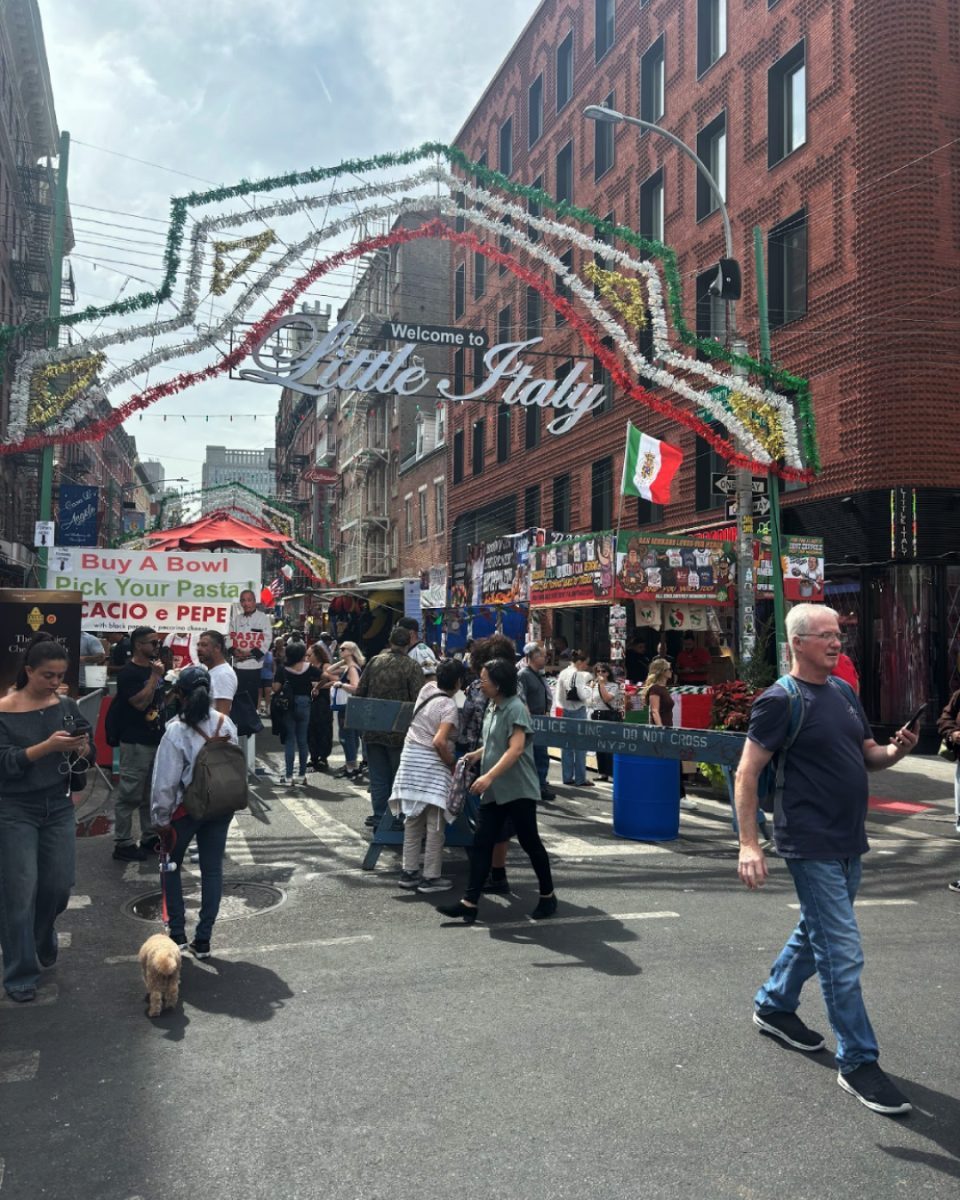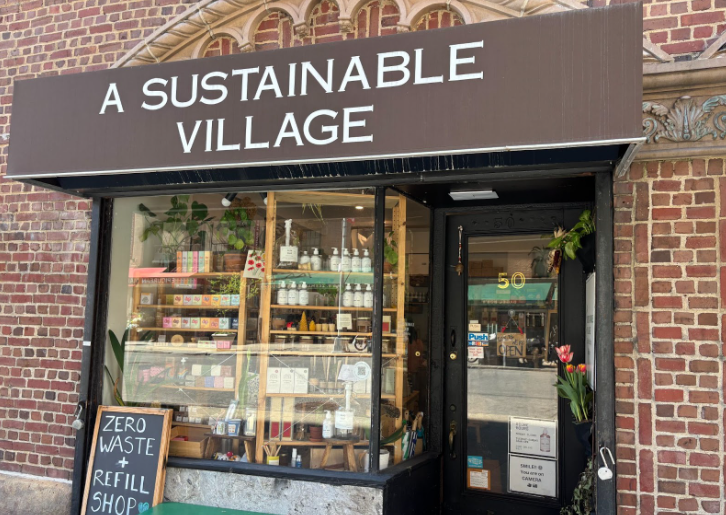The Coney Island Amusement District is a beloved summer destination for New Yorkers from all boroughs who come in search of Nathan’s hot dogs, the Cyclone roller coaster, the circus sideshows and …gambling?
Maybe so, if ‘The Coney’ proposal, led by Thor Equities, Legends Entertainment and the Chickasaw Nation, is approved to break ground.
The Coney is a project aimed at “revitalizing” Coney Island by constructing a 1.4-million-square-foot entertainment complex. The complex would include a 32-story hotel with 500 rooms, a 2,500-seat concert venue, 90,000 square feet of event space and 70,000 square feet of retail and dining on Surf Avenue, Jones Walk, West 15th Street and Wonder Wheel Way, according to City & State New York.
Developers say that The Coney would bring in “a brighter future for Coney Island,” providing a multifaceted entertainment experience that turns Coney Island into an all-year-round destination and a commitment to the Coney Island resident community in the form of a $200 million trust fund.
“Yes to The Coney…A development project that will positively impact the residents of Coney Island Beach Area,” Marie Mirville-Shahzada, a Brooklyn resident and the founder of Alfadila Community Services, posted in the Facebook Group Everything that’s Coney Island in January.
Developers also say that The Coney would result in sustainable, year-round employment opportunities in construction and at the casino once it opens. This is particularly crucial for Coney Island, a district starving for jobs for young people and older adults alike, Derick Latif Scott, a Coney Island outreach worker, tells Gothamist.
In an interview I conducted with New York State Senator Joseph Addabbo Jr., the Committee on Racing, Gaming and Wagering chairman, Addabbo described his stance on the casino as “neutral.” He went on to say, “I think people should be given the opportunity of making a better life…People should have the opportunity to get a really good paying union job, and that would be if the casino would open.”
However, those in opposition to the casino say that The Coney would bring traffic and crime to the district, harm the longevity of local businesses, obstruct the public’s view of the water, and dilute Coney Island’s historic charm.
In an interview with Frampton Tolbert, the executive director of the Historic Districts Council, he voiced his opposition to The Coney, stating that “[The Historic Districts Council] does not believe that this proposal respects and protects the existing historic resources of Coney Island.” He said “the scale [of the casino proposal] is wrong for that area, for the historic buildings, which are much more low rise…The way that they are doing it right now, this casino could be anywhere. It does not speak to Coney Island…If a casino would go in [Coney Island], we would want to see something that respects and embraces Coney Island’s history and character.”
Adam Rinn, the artistic director of the nonprofit Coney Island USA, emphasized the competition that The Coney would bring to existing businesses in Coney Island.
“As a business operator, a casino is going to gobble up any and all business from whatever is remaining in this amusement district,” Rinn says in an interview. “If [Coney Island USA] survives the construction, we are likely not going to survive once the casino is open. There is no way we can compete with that.”
According to the plans drawn up by the leaders of The Coney, Coney Island USA, the arts nonprofit in charge of the Coney Island Museum, the Coney Island Sideshow and the Mermaid Parade would be the only buildings within a two-mile radius that remain after the casino is constructed. It would become “a dimple on the ass of the casino” in Rinn’s words. Rinn explains that if Coney Island USA ceases to exist, so would the Mermaid Parade, the largest art parade in the nation.

The Approval Process
There are two separate channels of the casino approval process that The Coney would have to pass to break ground, according to a timeline posted on Instagram by @noconeycasino. The first is street demapping, which is a way for developers to create space for new developments by building over existing streets.
On the street-demapping side, the first initiative was a community board hearing on January 22. During this hearing, Community Board 13 voted against changing land use rules to accommodate the casino proposal. Although this vote is strictly advisory, it may sway public opinion on which proposals should receive licensing.
The Borough President Review, a public hearing that happened on March 10, resulted in Brooklyn Borough President Antonio Reynoso conditionally approving the demapping.
The City Planning Commission has 60 days after Reynoso’s recommendation for approval to hold two separate public hearings: one where the public can submit comments, and one where the public can speak and cast a final vote on the application. The City Planning Commission must vote by May 25.
After receiving the City Planning Commission report, the City Council has 50 days to hold a public hearing and vote on the application. Traditionally, when it comes to land use issues, the City Council tends to vote the same way the council members for the district vote. For Coney Island, this is Justin Brannan.
Finally, after the City Council declares a decision, it is final unless Mayor Eric Adams elects to veto it. The City Council then has an opportunity to override the mayor’s veto within 10 days by a ⅔ majority vote.
On the casino licensing side, casino license applications are due on June 27, 2025. The Coney is one of 11 proposals for one of three 2025 licences from the New York State Gaming Commission, according to City & State New York.
Next, in mid-2025, six Community Advisory Committee (CAC) members will be appointed to evaluate the casino license applications. In summer 2025, the CAC will hold two public hearings. The deadline for the CAC vote is September 30, 2025. The casino license application must receive 4/6 votes from the CAC to move forward to the Gaming Facility Location Board.
Finally, on December 1, 2025, the Gaming Facility Location Board will evaluate the 11 finalists and decide which three projects will receive licensing. “We won’t know how to compare one against the other until we compare all applicants,” Senator Addabbo said. “We have to look at the local impact as well as the state impact.”








Barbara Barrish • May 2, 2025 at 12:57 am
The area is already ruined with so many high rise apartment buildings built. My view of anything has been obstructed in every direction. All I see now are more and more buildings. The traffic is terrible, there are no parking spaces, and a casino would just be the final straw. I already can’t stand how densely populated this area has become with so many new apartment buildings. I already want to move